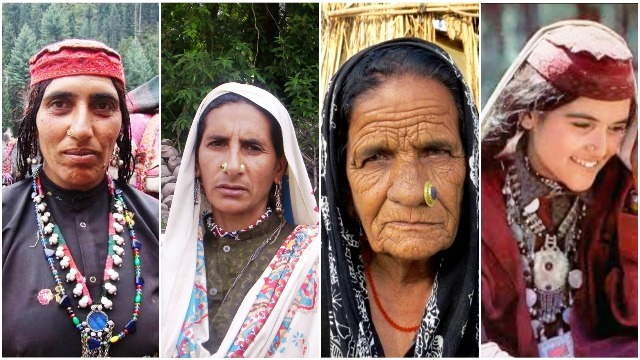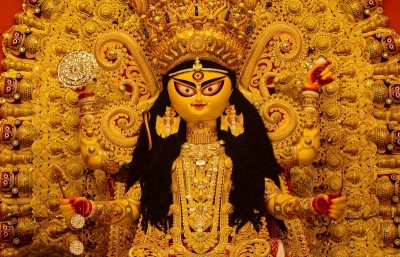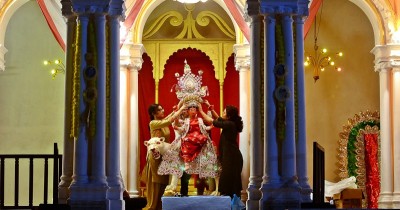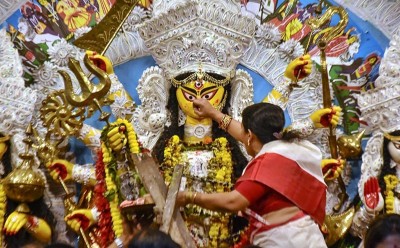
The Silver Nomads of the Himalayas
The nomadic Gujjars and Bakkarwals living between the higher mountain reaches to the plains of Jammu in the winters are also known for the beautiful jewellery that their women wear. Jammu-based journalist and professor Kavita Suri reports in the first person
In all my growing up years in the Himalayan state of Jammu and Kashmir, the nomadic Gujjars and Bakkarwals fascinated me, one for their nomadic lifestyles and their oscillations between the higher reaches of mountains to the plains of Jammu in the winters along with their sheep and horses twice a year, secondly also for the beautiful jewellery that their women wear.
Perhaps, this is the reason that my love for silver jewellery rose to the level of a passion and donning the same in all these past years till now. Though I have myself a huge treasure of silver ornaments accumulated over the years from Jaipur to Sadar Bazar to Dilli Haat and even as far as Turtuk in the farthest end of Nubra Valley of Ladakh and Leh market too, the fascination for the silver jewelry of the nomads of Jammu and Kashmir still remains at the top.
The exotic Gujjar and Bakkarwal tribal women wear heavy and artistic jewellery most of which is made of silver. These are the members of the twin Scheduled Tribes of Gujjars and Bakkarwals who with their unique social, cultural and linguistic identities form the third largest community in Jammu and Kashmir.
Gujjars, primarily a nomadic community, over a passage of time have adopted a sedentary lifestyle in villages in the plains bordering the foothills and have taken to the cultivation of land as their primary occupation. However, a marginal population of Gujjars is semi-settled and combines the cultivation of land with pastoralism.
Gujjars are the ones who move to the lower and middle mountain areas of Pir Panjal pastures in the summer with their flock of buffalos where they engage in cultivation and come back to the plains in the winters. Bakkarwals are still the ones who travel to as far as Dras and Kargil from Jammu plains as part of their traditional nomadic journeys.
The Gujjar and Bakkarwal females are fond of jewellery and have a fascination for the necklaces. Their necks are embellished by many necklaces. Women wear a long chain made of silver around their necks known as ‘Gani’ and ‘Haseeri’. They also wear necklaces. One variety of the tribal necklaces has a triangle pendant, studded with a beautiful stone in the centre of it.
It symbolizes 'evil eye' and mainly utilized to avert bad luck. Another type of silver necklace is known as “Dodmala”, the one which is made of small pieces of silver together and each piece pointed at the end. Another silver necklace which is very popular among the women of these tribes is “Hamel" necklace which is made of coins. The coins are strung on a thread with a heavy pendant. The “Jomala” and “Hansli” are the other necklaces.

Majority of married women of these twin nomadic tribes have their nose pierced. They put nose pins which are made of silver on their nose. Nose pins come in different sizes which denote whether the girl is married or not. Among few Gujjar older women, nose is pierced from both sides. While the unmarried girls wear a small string of silver, the married ones have their nose decorated with a big silver ring studded with stones or pearls.
The “Murki” is another nose ornament, suspended from the Centre part of the nose which is mostly worn by young girls. Nose pins come in different sizes which denote whether a woman is single or married. The smallest nose-pin known as a ‘Nali‟ is worn by girls; a slightly bigger nose pin or ‟Teera‟ is worn by older girls while married women wear large and intricate nose-pins known as “Loung‟.
These tribal women also tastefully decorate their ears with silver.
Their ears droop with the weight of a dozen “Balis” or silver rings with bells. The “Jhumkas” also dangle and tinkle. They also wear a fancy silver cap or crown on the head known as 'Chonk Phool' which is a is a bowl-shaped ornament fastened to the head. The wrists have big weighty silver “karas’.
The Gujjar brides also are decorated with silver ornaments like silver chains, silver Dolara, silver sargast, silver mahail, silver gani, silver earrings, silver bangles, silver rings etc.

Image: Bollywood yesteryear heroine Sharmia Tagore in some traditional Kashmir jewellery in the film Kashmir Ki Kali
Men sometimes wear rings of silver but they usually don’t put on heavy jewellery. The typical Gujjar kameez or shirt sometimes has silver buttons. Silver beads hooked to the buttons produce a sound. Silver studs called “mogla” are used as cuff links. Silver anklets called as “Jhanjra” are worn along with the “Anguthra” on a silver ring on the big toe.
All along the traditional nomadic routes of these twin tribes of Gujjar and Bakkarwals, a number of silversmiths have been working since ages who cater to the particular needs of the nomadic people and their traditions.
Support Our Journalism
We cannot do without you.. your contribution supports unbiased journalism
IBNS is not driven by any ism- not wokeism, not racism, not skewed secularism, not hyper right-wing or left liberal ideals, nor by any hardline religious beliefs or hyper nationalism. We want to serve you good old objective news, as they are. We do not judge or preach. We let people decide for themselves. We only try to present factual and well-sourced news.





.JPG)


